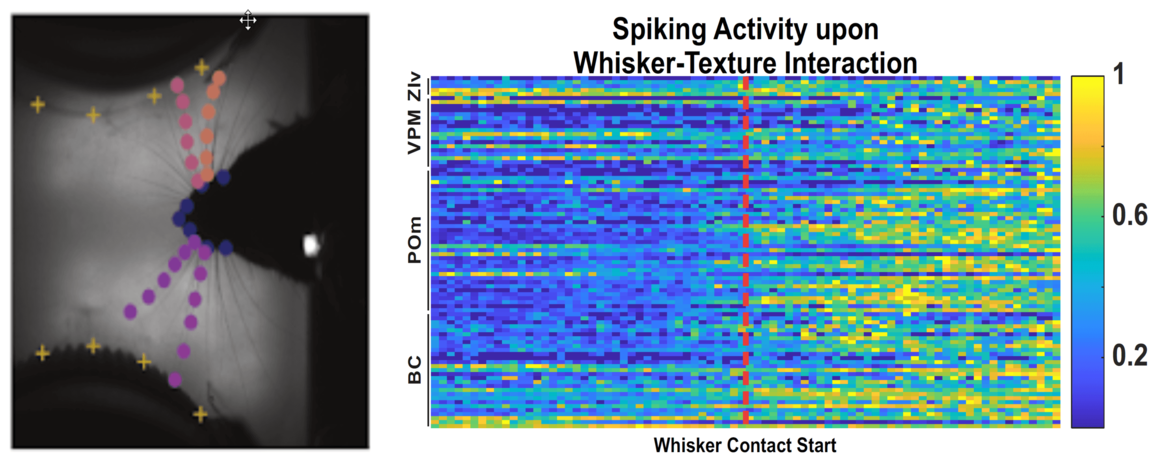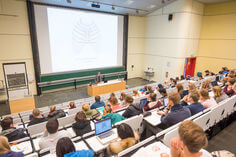- Institut
-
Herz- und Kreislaufphysiologie
- Markus Hecker
- Thomas Korff
-
Hugo H. Marti
-
Forschung
- Zelluläre und molekulare Mechanismen der postnatalen Entwicklung des zerebralen Gefäßsystems
- Die Bedeutung der molekularen PHD-HIF Achse für den akuten Schutz und die langfristige Regeneration nach einem ischämischen Schlaganfall
- Charakterisierung und gezielte Aktivierung von NRF2-abhängigen antioxidativen Mechanismen beim akuten Schlaganfall
- Extrazelluläre Nukleinsäuren als Trigger neuroinflammatorischer Prozesse in akuten und chronisch degenerativen Erkrankungen des Zentralnervensystems
- Neuroprotektion und Neurogenese
- Blut-Hirn-Schranke
- Publikationen
- Personal
-
Forschung
- Andreas H. Wagner
- Neuro- und Sinnesphysiologie
- Lehre
- Zentrale Einrichtungen
- Bernard Katz Lecture
- Stellenangebote
- Aktuelles
Context-dependent sensory processing and perceptual salience
Functional neuronal ensembles in the higher-order thalamus, the posterior medial nucleus (POm) in the rodent whisker system, are likely generated by motor, sensory and context-dependent variables (whisking, locomotion, salience). Although we do not know the exact relationship between POm ensembles and distinct behaviours, these thalamic representations largely reflect cortical computations, which are conveyed via corticothalamic (CT) pathways to higher-order thalamic networks. Our goal in this DFG-funded project is to understand the function of these “higher-order ensembles” in behaviour – they could be involved in detecting salient stimuli and preparing an appropriate motor response, or might play a role for selective attention, or in modulating sensory-motor integration. Multi-site electrophysiological recordings allow us to monitor neuronal ensembles in the thalamocortical system in the context of behaviour. Optogenetics are used to probe circuit mechanisms of cortico-thalamo-cortical communication and are applied in a behavioural learning paradigm to identify the hitherto unknown physiological roles of CT pathways. The research is carried out in collaboration with Prof. Thomas Kuner (Institute for Anatomy and Cell Biology).
Researchers
Filippo Heimburg
Nadin Saluti
Josephine Timm
Cooperation partners
Thomas Kuner (Institute of Anatomy and Cell Biology, Medical Faculty Heidelberg)
Adreas Draguhn, Martin Both, Matthias Klumpp, Lee Embry (Institute of Physiology and Pathophysiology, Medical Faculty Heidelberg)


Tactile discrimination task
A mouse palpates objects with its whiskers to decide whether to proceed to the reward zone or turn around. Example neuronal spiking patterns in the thalamocortical system during object palpation.
- Institut
-
Herz- und Kreislaufphysiologie
- Markus Hecker
- Thomas Korff
-
Hugo H. Marti
-
Forschung
- Zelluläre und molekulare Mechanismen der postnatalen Entwicklung des zerebralen Gefäßsystems
- Die Bedeutung der molekularen PHD-HIF Achse für den akuten Schutz und die langfristige Regeneration nach einem ischämischen Schlaganfall
- Charakterisierung und gezielte Aktivierung von NRF2-abhängigen antioxidativen Mechanismen beim akuten Schlaganfall
- Extrazelluläre Nukleinsäuren als Trigger neuroinflammatorischer Prozesse in akuten und chronisch degenerativen Erkrankungen des Zentralnervensystems
- Neuroprotektion und Neurogenese
- Blut-Hirn-Schranke
- Publikationen
- Personal
-
Forschung
- Andreas H. Wagner
- Neuro- und Sinnesphysiologie
- Lehre
- Zentrale Einrichtungen
- Bernard Katz Lecture
- Stellenangebote
- Aktuelles




